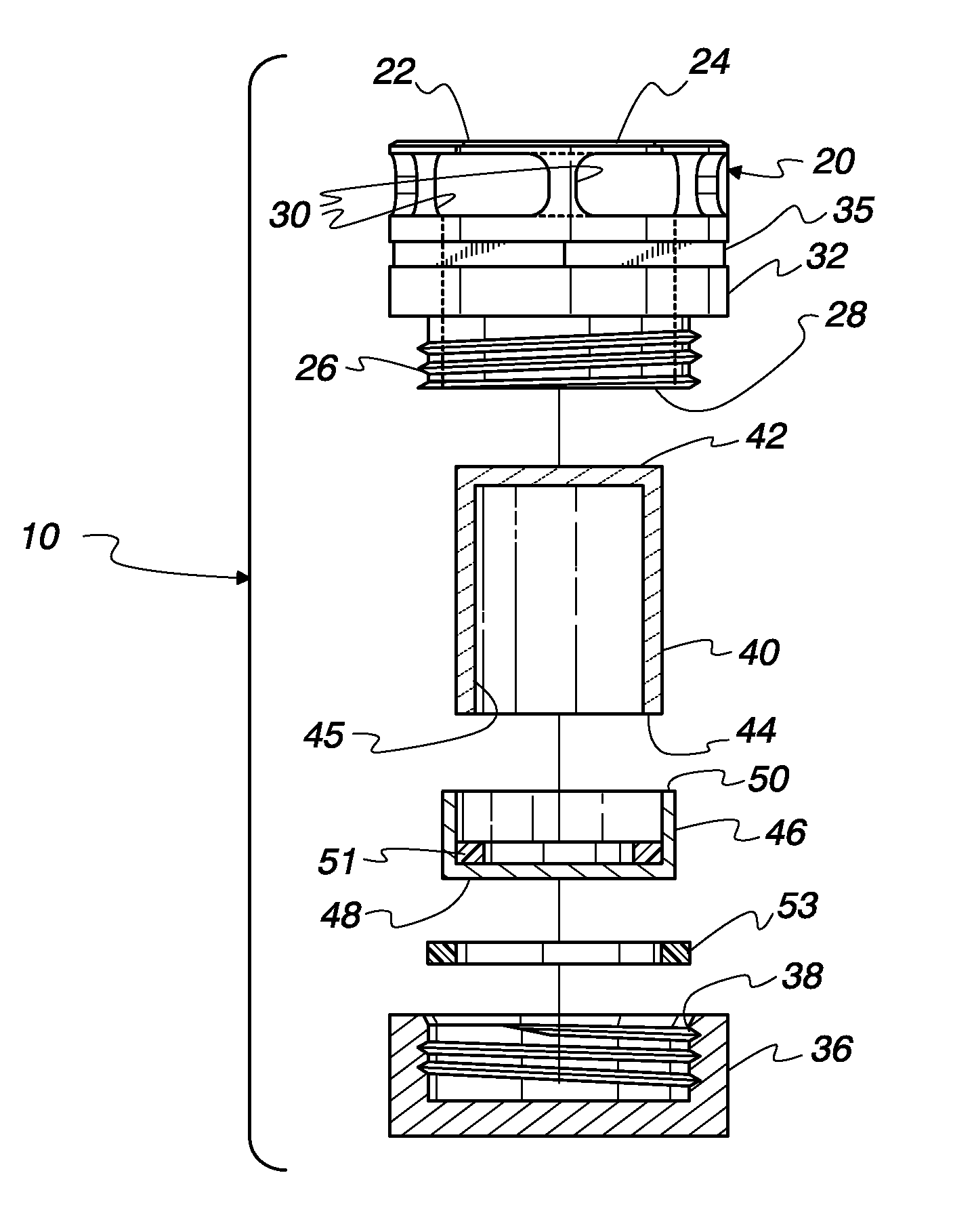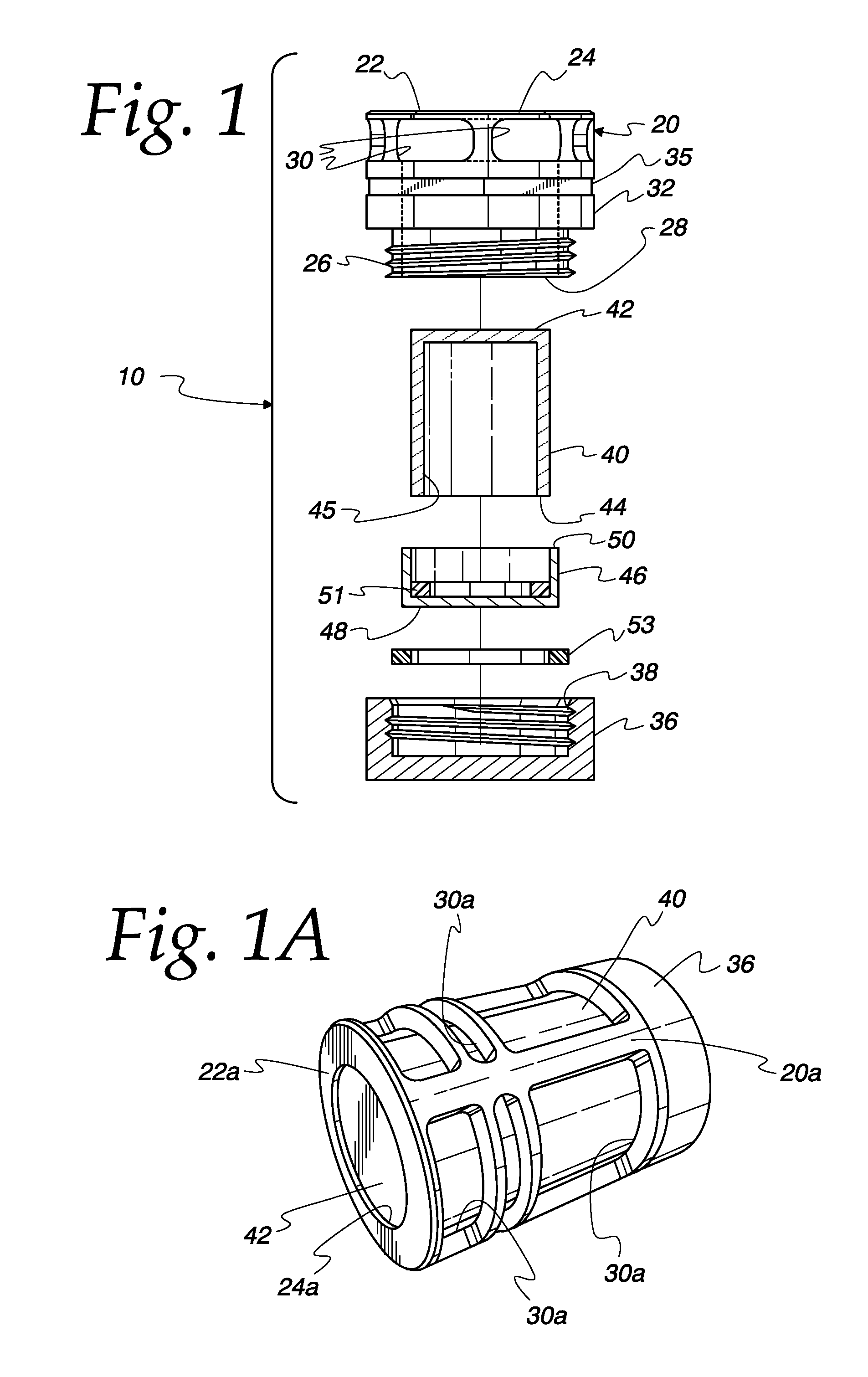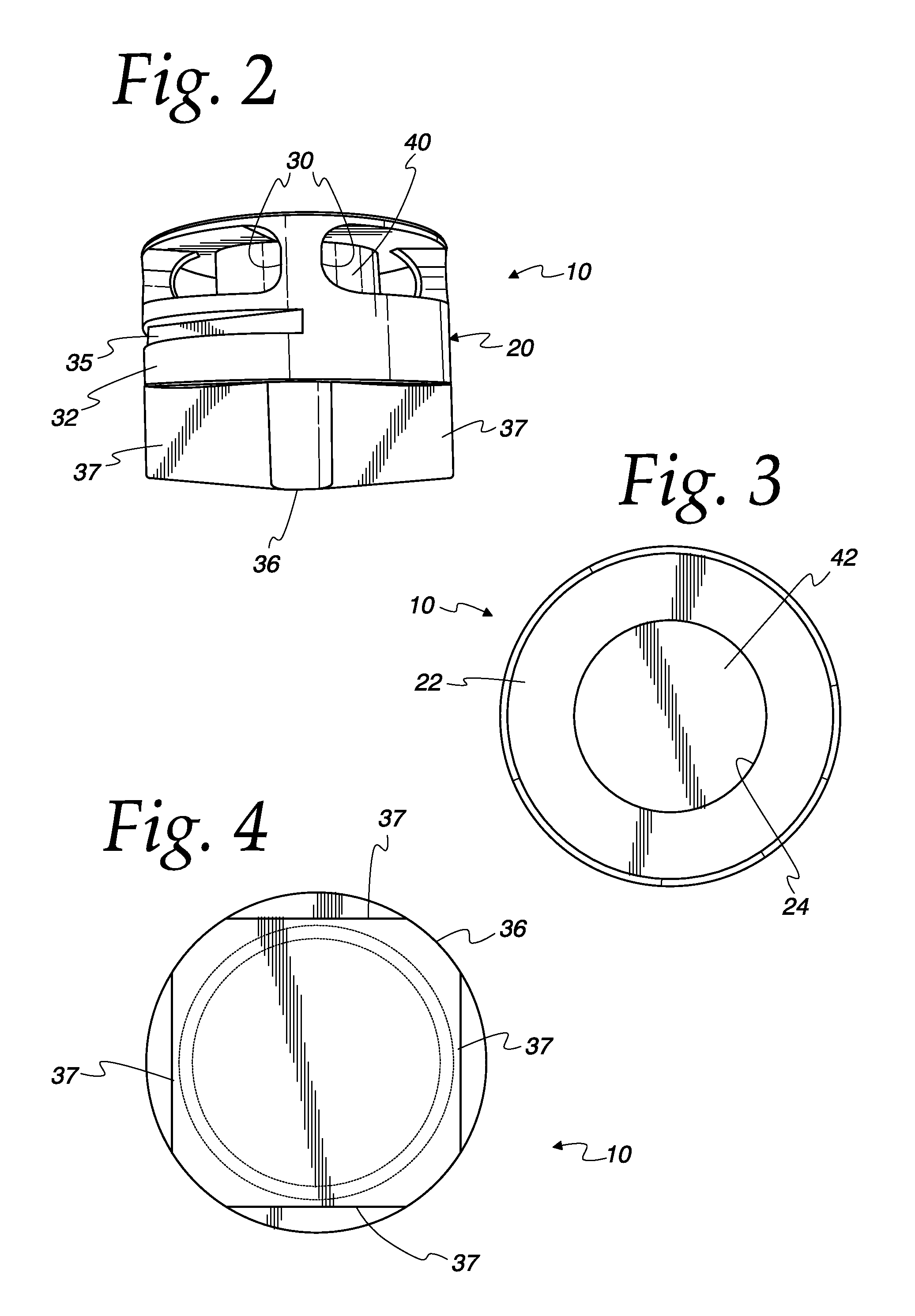Methods for producing Cu-67 radioisotope with use of a ceramic capsule for medical applications
a technology of radioisotopes and ceramic capsules, which is applied in the direction of nuclear targets, separation processes, nuclear engineering, etc., can solve the problems of melting and possible failure of targets, certain non-metals, such as graphite and boron nitride, are not appropriate for the target capsule, and certain non-metals, such as quartz/glass, are not appropriate for the sublimation body
- Summary
- Abstract
- Description
- Claims
- Application Information
AI Technical Summary
Benefits of technology
Problems solved by technology
Method used
Image
Examples
example 1
Sublimation of Zinc Target Ingot
[0055]Sublimation separation of the irradiated metallic zinc from the Cu67 radioisotope was achieved on a zinc target ingot. The solid zinc target ingot within an alumina capsule was placed within a vacuum-tight alumina sublimation tube. The bottom of the sublimation tube was placed into a tube furnace and heated under an internal vacuum, to around 700° C. The sublimed zinc deposited on the cooler top of the sublimation tube, which was outside the furnace. Sublimation occurred very rapidly, at about greater than 40 g / h under a modest vacuum of about 1 mTorr. The heating and sublimation cycle was sufficiently slow, about less than 3° C. per minute, to avoid thermal cracking of the alumina. Once the sublimation process was complete, the furnace was shut down and the system was allowed to cool at a slow rate.
PUM
| Property | Measurement | Unit |
|---|---|---|
| temperature | aaaaa | aaaaa |
| temperatures | aaaaa | aaaaa |
| mass | aaaaa | aaaaa |
Abstract
Description
Claims
Application Information
 Login to View More
Login to View More - R&D
- Intellectual Property
- Life Sciences
- Materials
- Tech Scout
- Unparalleled Data Quality
- Higher Quality Content
- 60% Fewer Hallucinations
Browse by: Latest US Patents, China's latest patents, Technical Efficacy Thesaurus, Application Domain, Technology Topic, Popular Technical Reports.
© 2025 PatSnap. All rights reserved.Legal|Privacy policy|Modern Slavery Act Transparency Statement|Sitemap|About US| Contact US: help@patsnap.com



